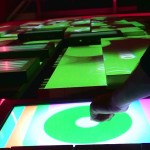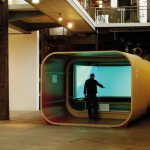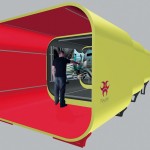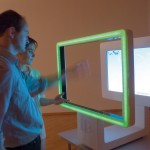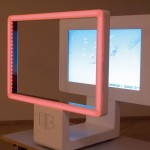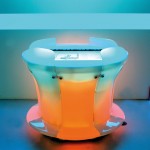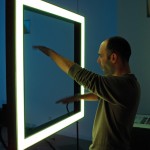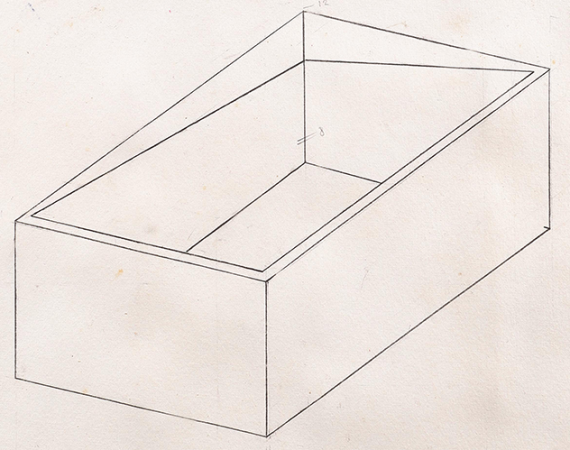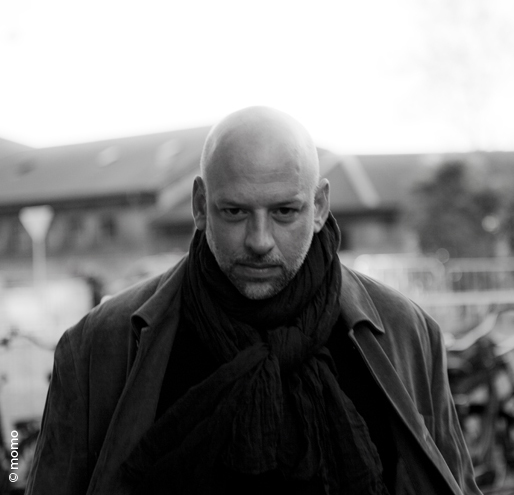
Nothing is straightforward or one-dimensional about him, neither when it comes to his line of work, nor to his products. “I’m a hybrid”, says Oliver Irschitz, a merger of architect and media designer. He applies a multi-disciplinary approach to his work, from conception to completion, implementing sound and moving images alike, uniting seemingly unrelated crafts such as programming, carpentry and plastics processing along the way.
The 43-year-old Tyrolean’s professional focus is on the point of contact between man and machine, the user interface. He has been at the forefront in this particular area since the pioneering days. The name of his firm, too, is indicative of the in-between space he explores and the parallel universes he seeks to inhabit: Peyote is a cactus with powerful hallucinogenic properties.
Science Fiction
Oliver Irschitz invented the iTube, the iFrame and the iPoint interfaces long before Apple’s first iPad saw the light of day. The iFrame’s built-in infrared sensors allow users to control the screen without actually touching it – when an invisible barrier is breached, every movement is transmitted to the screen. It’s ideal for presentations, but is also used in complex, interactive physical therapy games.
The round and transparent iPoint table can best be compared to a massive iPad. Irschitz’ most spectacular invention, however, is the iTube, which takes the shape of a large, portable walk-in tube. When a person steps into the tube, he enters a virtual, interactive world that can be navigated and manipulated through body movement.
The first iTube was created around the turn of the century, and in 2003 the conception was nominated by Time Magazine as “best invention of the year” (Apple’s iTunes music store eventually claimed the prize that year). Irschitz, who received part of his formal education at the renowned Massachu- setts Institute of Technology (MIT), has put the iTube to use, for example, at Swarovski Crystal Worlds in Wattens, and the 2010 Shanghai World Exposition in China, where he converted the Austrian pavilion into a “river of electrons”.
The Shanghai project motto “Austria be touched” was to be taken literally. Infrared light-emitting and receiving modules were installed to create a light-sensitive barrier, which, when breached by a hand, conveyed commands to a computer that had been programmed to play specific video clips according to the hand movements applied. This project earned Irschitz the Austrian 2011 Multimedia State Prize.
Start-Ups & -Downs
Big corporations have converted inventions similar to Irschitz’ into commercial success, but to him being his own master has always been important. “I have been an independent entrepreneur since the day I graduated. From the very first hour since 1998. I have done everything on my own terms. A Silicon Valley start-up attempt never got off the ground. There have been many ups and downs along the way.”
The man behind Peyote intends to stay a hybrid, if you will: he’s contemplating a possible venture into more earthy matters as a way of balancing out the years spent submerged in the virtual world. More specifically, he’s considering a new career in organic farming.
(myART MAGAZINE Nr. 07/2016)
Information: Gerti Draxler is design expert at Dorotheum
Design Auction
16. June 2016, 5pm
Palais Dorotheum Vienna
Viewing from 10. June – 16. June

